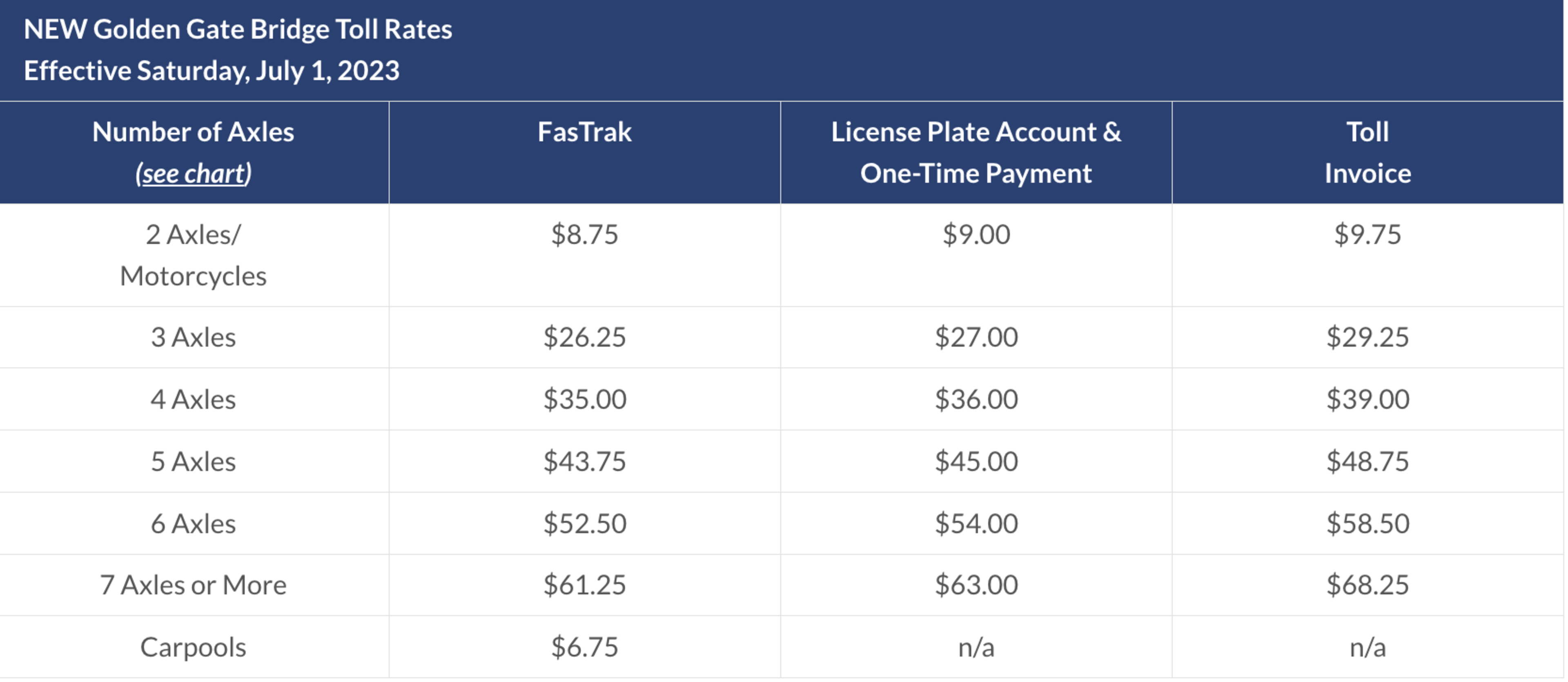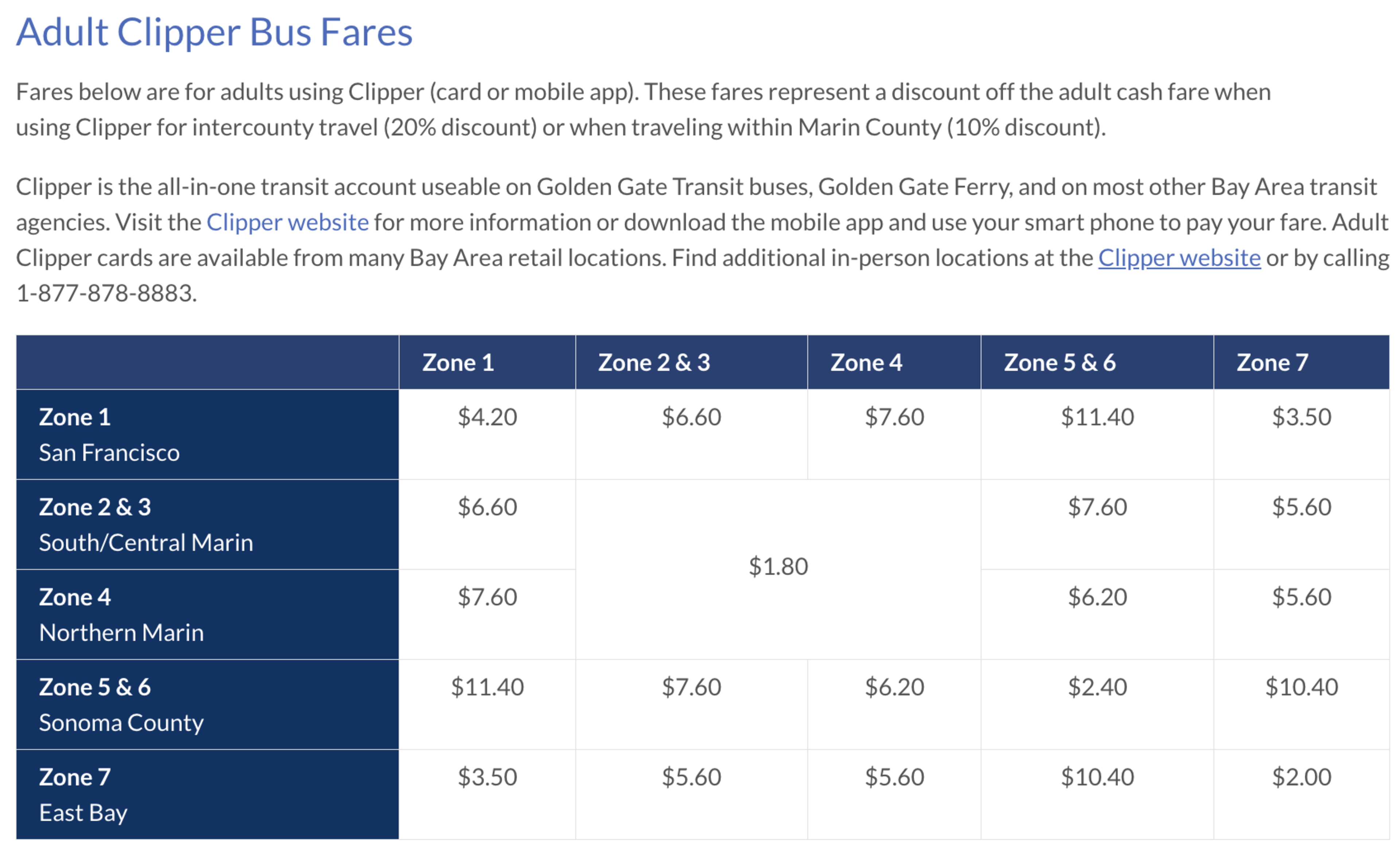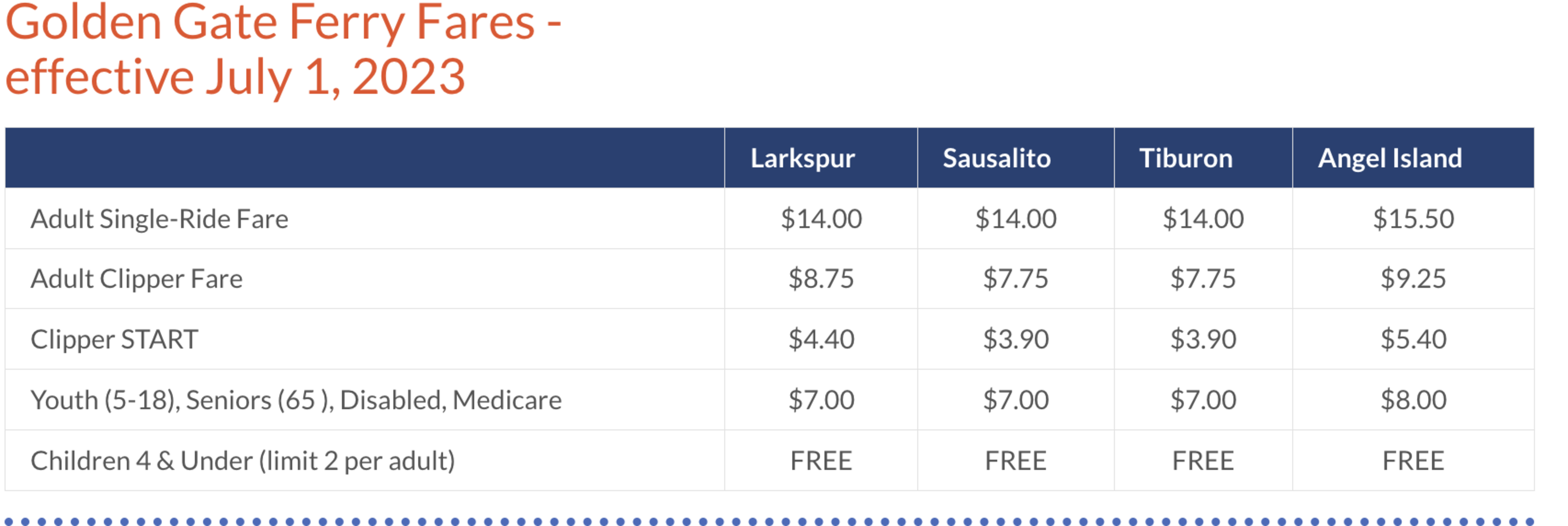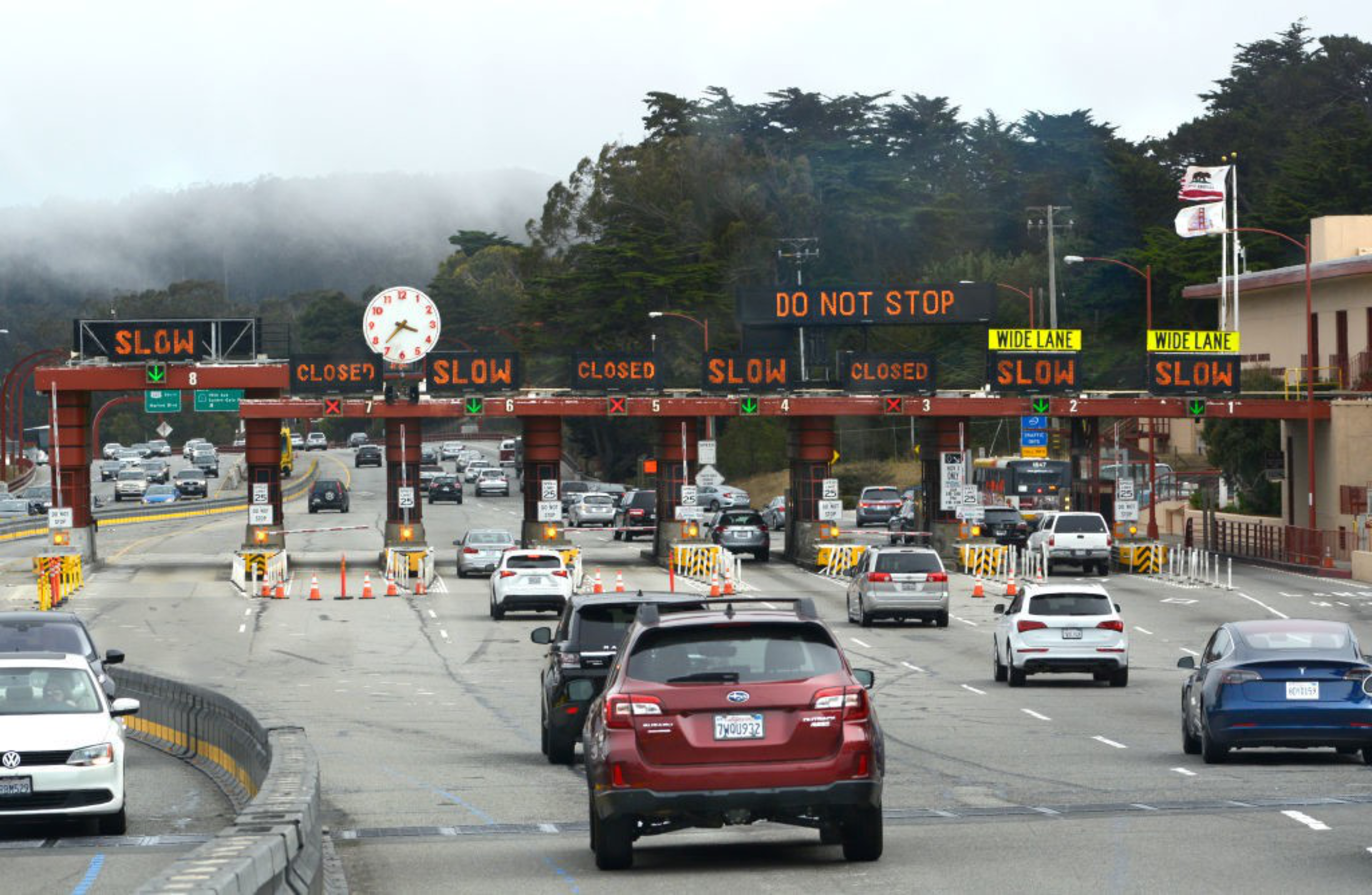Commuting in and out of San Francisco is about to get pricier as Downtown’s woes continue to pile up.
Starting July 1, several transit-related price hikes will hit Bay Area residents: a toll increase for the Golden Gate Bridge, hiked fares for regional buses and ferries with the Golden Gate Transit system (opens in new tab), and a statewide tax increase for gas.
The planned increases are designed to stem public transit budget deficits brought on by federal funds drying up as well as lower ridership during and after Covid. Officials have warned that, without an influx of funding, transit systems could see drastic service cuts.
These fare increases may also be a harbinger of more price increases to transit, with an already-approved 5.5% BART fare increases in 2024 and 2025 and lawmakers pushing for a potential $1.50 toll hike for the Bay Bridge aimed at funding BART.
Golden Gate Bridge Toll Hike
The Golden Gate Bridge toll will increase by 35 cents (opens in new tab) to $8.75 every time you enter San Francisco using FasTrak—or $9.75 without it—and cross its International Orange span (opens in new tab). Those using pay-as-you-go license plate accounts or one-time payments will pay $8.80 to $9.

The Golden Gate Bridge toll is currently the priciest bridge toll (opens in new tab) in the Bay Area. It’s used for funding public transit (opens in new tab) and maintaining the famed bridge.
The cost increases are part of a five-year toll and fare increase plan (opens in new tab) to address a projected five-year deficit of $423 million (opens in new tab), assuming transit service returns to pre-pandemic levels.
Bus and Ferry Fare Increases
Commuters taking Golden Gate Transit buses locally within San Francisco currently pay a $4 fare with a Clipper Card, or $5 without one. Fares for Golden Gate Transit ferries currently range from $7.50 and $9 with a Clipper Card, depending on the destination.

Bus fares will increase 20 cents and ferry fares will increase by 25 cents for Clipper users. Those paying cash to ride Golden Gate Transit buses within San Francisco will see their fares tick up 25 cents to $5.25 starting Saturday. Discounts for Golden Gate Transit bus fares paid with a Clipper Card will remain in effect with the fare hike.

Gas Tax Jump
The gas tax will jump roughly 7%—or another 4 cents per gallon (opens in new tab)—increasing the total gas tax to almost 58 cents per gallon, according to the California Department of Tax and Fee Administration.
California’s gas tax (opens in new tab) is already one of the highest in the U.S. (opens in new tab) and goes to fund maintenance for roads and highways as well as public transit.
